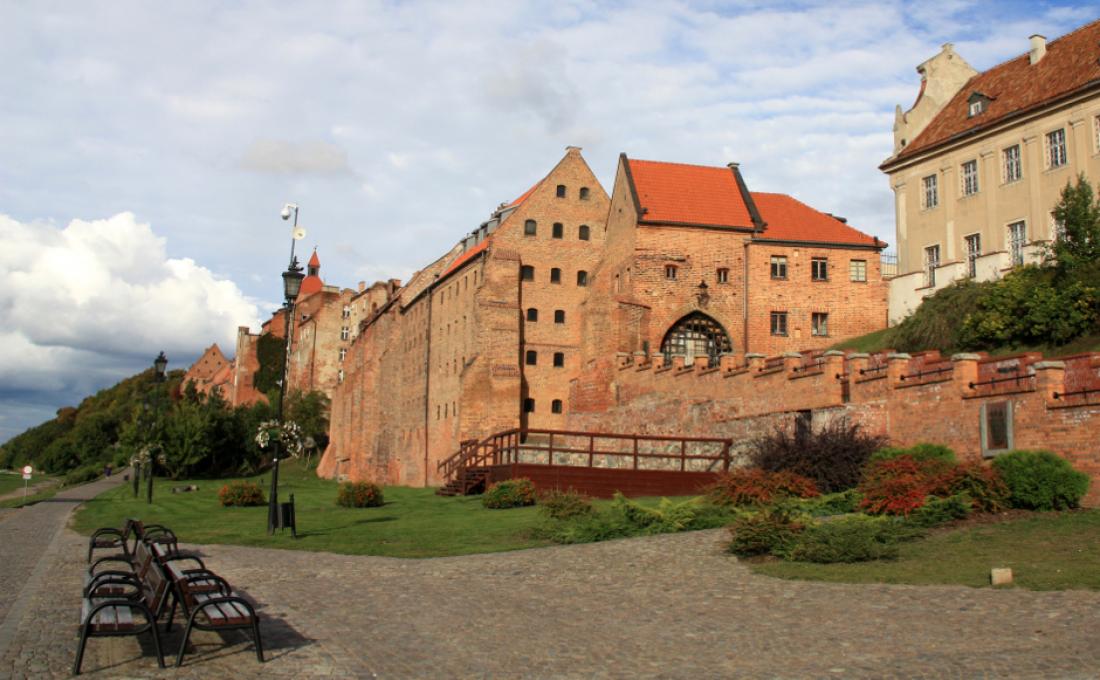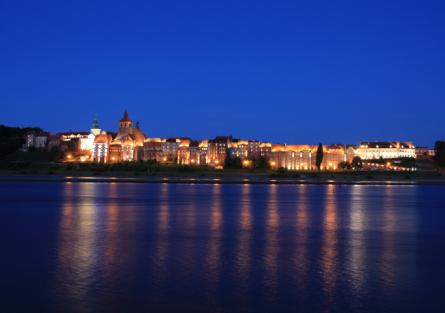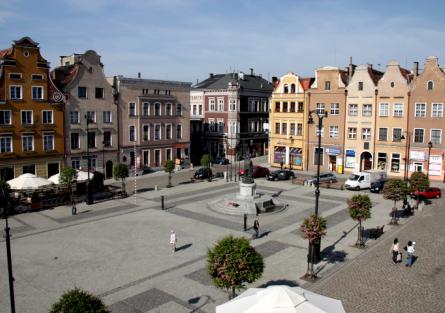Grudziądz

Grudziądz is a hundred thousand-citizen city situated on the right bank of the Vistula river, in the north part of Kuyavian-Pomeranian province. The city is a natural ‘gate’ to Tuchola Forest, Chełmno Land and Iława Lake District. From Toruń we can get to Grudziądz by the domestic road No. 91 or the expressway A1. There is also a direct train connection from Toruń to Grudziądz.
The oldest monuments of Grudziądz and also the first brick buildings are the structures upraised during Teutonic rule: ruins of the castle, St. Nicholas’ Church and the city walls with the Water Gate. The Late Middle Ages left a characteristic series of monumental granaries which create the unique Vistula panorama.
The armed conflicts with Swedes deprived the town of all the monuments from Renaissance period, however, the strong counter-reformation movement from the turn of the seventeenth and eighteenth centuries left, admired to this day, three beautiful baroque monastic foundations in Grudziądz: of Benedictine Sisters, reformers and Jesuits.
The Partitions of Poland, taking over the city administration and the expected war with Russia resulted in a decision of the Prussian king Frederick II to build a fortress in Grudziądz. In a short time the most modern and the biggest fortress in Poland was created, with 5 bastions, 4 ravelins and a 32 km long course of underground communicational and counter-mine foot paths. The rapid growth of military art and building the bridge over the Vistula river raised the necessity to extend the fortress with new works in the end of the nineteenth century. At that time there appeared the following: Mała and Wielka Księża Góra Forts, Nowa Wieś, Parski, Tarpno, Dąb, Gać, Lasek Miejski and Strzemięcin Forts. Such a significant extension of the city’s fortification system took revenge on Grudziądz during the liberation fights in winter 1945.
Nowadays, apart from well-preserved Gothic monuments and baroque monasteries, the tourists can sightsee almost all the forts, and on so called ‘open days’ (3rd May and 11th November) and on each Saturday from May to September – also the fortress, which is the property of the army. Organised groups can sightsee the fortress also on the other days of the year.
Worth visiting in Grudziądz, is the only graduation tower in Europe closed in a pyramid. Thanks to its closed air circulation the concentration of the elements beneficial for health is so high that – as balneology experts claim – one hour of inhalation in the pyramid is equal to the whole day of iodine absorption at the seaside. The brine is also used in the city’s recreational swimming pools.
An attraction for families with children is Mega Park – a family amusement park located by Rudnickie Lake. The Park includes: Wonderland, Jurassic Park, Flinstones’ Land, a zoo and a safari but it is the Kansas City which makes the biggest impression on the youngest children. It is a Wild West town where children actively take part in its performances.

